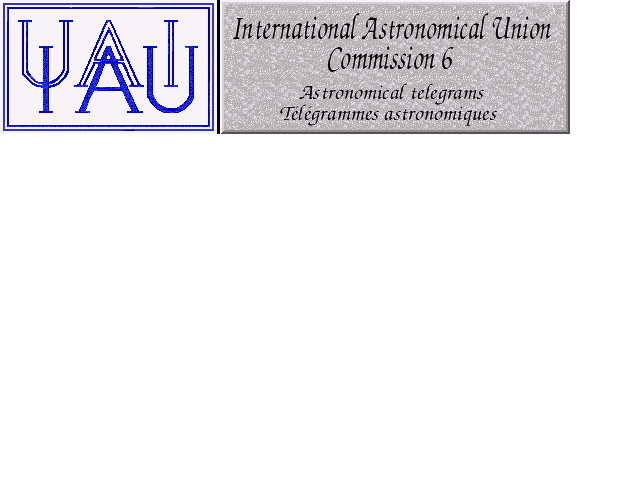Central Bureau for Astronomical Telegrams


IAU Commission 6 General Information
For centuries, it has been necessary to provide a mechanism for disseminating information about unexpected celestial events, such as the appearance of a bright comet or nova. In ancient times this information was provided quite haphazardously, at best along national lines.Interest became more international around the end of the eighteenth century, by which time to be the first person to witness a new comet had become quite a competitive sport. Von Zach's publication of the Monatliche Correspondenz and later Schumacher's Astronomische Nachrichten were significant early steps that ensured reliable and reasonably fast communication, and the King of Denmark's establishment of a gold medal to honour the first discoverer of each comet supplemented the need for communication with a procedure to guarantee that each discovery was appropriately recognized.
The construction of the first cable across the Atlantic Ocean and the increasing need for astronomers to have up-to-date information about new discoveries led to the establishment in Germany of the "Astronomische Zentralstelle" that is effectively the predecessor of the International Astronomical Union's "Central Bureau for Astronomical Telegrams". The German office collapsed during World War I, and the IAU was established shortly after the War's end. One of the IAU's 32 original commissions, "Astronomical Telegrams", was set up to oversee the rapid international dissemination of urgent astronomical information. This meant in particular the oversight of the "Central Bureau for Astronomical Telegrams", which was set up in Brussels in 1920, moved to Copenhagen in 1922 and to Cambridge (Massachusetts) at the beginning of 1965. This process has worked well, even during World War II, when the telegrams from Copenhagen were relayed to the allied countries via Lund, in neutral Sweden. The North American sub-office in Cambridge was also very important with regard to communication in the western hemisphere.
In 1984 the Central Bureau established a log-in "Computer Service", which was later expanded and supplemented with the widespread dissemination of information by electronic mail. The Bureau has all along also communicated information by printed Circular, and it continues to do so. The prevalence nowadays of e-mail and other internet services allowed the Bureau to cease the distribution of information by telegram in 1993, and its telegraphic address for incoming information was terminated at the beginning of July 1995.
IAU Commission 6, which currently comprises some 20 members in 13 countries, continues to oversee the dissemination of information and the assignment of credit for astronomical discoveries. It still bears the name "Astronomical Telegrams", even though the last vestiges of that venerable method of communication have now disappeared from its Central Bureau. In administrative terms, Commission 6 is a special commission of the IAU Executive Committee and as such, it does not belong to any of the newly created IAU Divisions.
Back to Commission 6 homepage